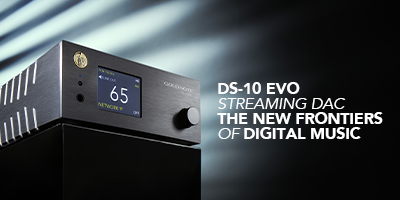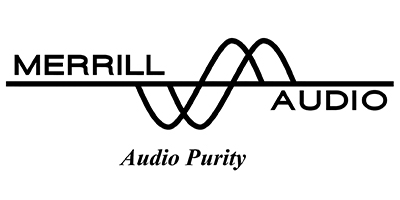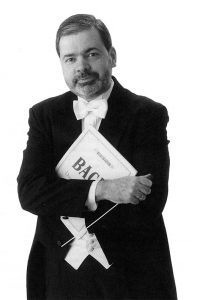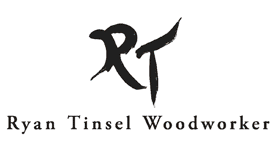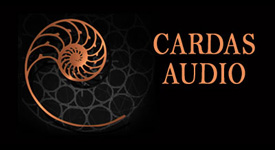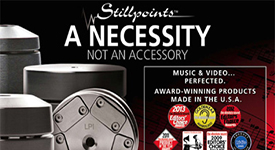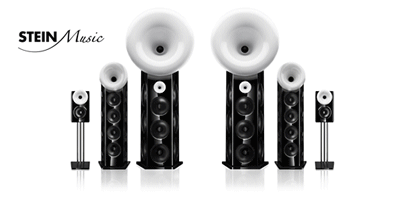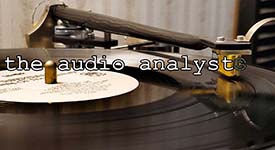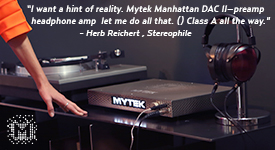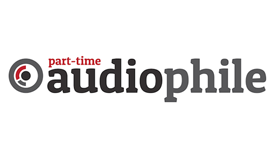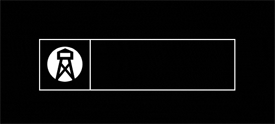Led Zeppelin's Physical Graffiti (1975, Swan Song Records) is undeniably the band's magnum opus, and quite possibly the most comprehensive statement of who Led Zeppelin were and how they evolved into the world's greatest rock ‘n' roll band. Fans obviously agreed by voting with their wallets, taking the album to 17x platinum in the US alone, while topping the Billboard album charts in both the US and UK. Rhino is celebrating the legacy of Led Zeppelin and the 50th anniversary of Physical Graffiti by offering a 3-LP set that includes a third disc of bonus material (all outtakes and rough tracks taken from the 2015 deluxe edition). A new companion disc is also available, Live E.P., that features concert performances of four Physical Graffiti tracks that were taken from recordings made at Earls Court (1975) and Knebworth (1979). The companion disc is available as either a 12-inch LP or a CD.
Both the 50th anniversary LP package and the 12-inch EP were created by Optimal in Germany. Physical Graffiti's die-cut, top-loading, single pocket outer jacket perfectly matched the appearance of my original set; that's also true of its printed inner sleeves, which perfectly aligned with the jacket's die-cut windows. The 50th anniversary edition also includes a repro of the poster for the album's original release, and sets ordered from the band's website also include a repro of the printed program from their Earls Court live shows in support of the album. Live E.P. features a standard single jacket, and while its theme complements that of the catalog album, it's fairly spartan in terms of appearance and artwork. I inserted rice paper liners into the printed inner sleeves of Physical Graffiti; the Live E.P. arrived already inserted into a rice-paper lined sleeve. While Physical Graffiti was taken from Jimmy Page's 2015 remasters; Live E.P. was newly remastered by Page and Felix Davis. My promo copies were perfectly flat, with glossy and pristine surfaces that exhibited no appreciable noise during playback. Both Physical Graffiti and Live E.P. are available at Rhino's web store HERE, and can also be found at a variety of online and brick and mortar locations, including your local independent record store.
Led Zeppelin, Physical Graffiti. (3) 180 Gram Swan Song LPs, $64.98
In January, 1974, and less than a year following the release of Houses of the Holy, Led Zeppelin convened at Headley Grange to begin work on their yet to be named sixth studio album. Headley Grange had become their go-to recording location, and the expansive manor house afforded the band not only a great performance space with excellent acoustics, but also allowed them to share living quarters and write new songs as their recordings evolved. They'd previously recorded most of Led Zeppelin III, IV, and Houses of the Holy at Headley Grange, and quickly wrote and recorded eight new songs within the space of two months. Ron Nevison engineered the recordings, and as usual, Jimmy Page produced. Page soon came to the realization that Zeppelin had something of a conundrum: there were too many good songs for a single LP, but not enough to fill a double album. He also realized the band had a number of previously unreleased recordings from LZ III, IV, and HOTH that were a good fit thematically with the new tracks. Page got to work finalizing the track list, and Keith Harwood spent much of the summer recording overdubs and mixing the finished album at Olympic Studios, which ultimately became Physical Graffiti.
Physical Graffiti was released in February, 1975, and was the band's first album on their new Swan Song label. It debuted at number one on the UK Billboard album charts, and quickly reached the number one position in the US as well—it became the first album to ever ship platinum strictly from advance orders. Physical Graffiti had been intended for release in late 1974, but aligning the jacket's die-cut windows in designer Peter Corriston's iconic album art proved exceptionally difficult for the printer to execute. Upon Physical Graffiti's eventual arrival on record shelves, the album sold briskly, and for a while even outpaced that of Led Zeppelin's biggest selling album, Led Zeppelin IV. Physical Graffiti was met with an abundance of critical praise, and Robert Plant has stated that the album definitely represents Led Zeppelin at its creative peak.
Track List:
Disc One
A1. Custard Pie
A2. The Rover
A3. In My Time Of Dying
B1. Houses Of The Holy
B2. Trampled Under Foot
B3. Kashmir
Disc Two
C1. In The Light
C2. Bron-Yr-Aur
C3. Down By The Seaside
C4. Ten Years Gone
D1. Night Flight
D2. The Wanton Song
D3. Boogie With Stu
D4. Black Country Woman
D5. Sick Again
Disc Three
E1. Brandy & Coke (Trampled Under Foot) (Initial Rough Mix)
E2. Sick Again (Early Version)
E3. In My Time Of Dying (Initial Rough Mix)
F1. Houses Of The Holy (Rough Mix With Overdubs)
F2. Everybody Makes It Through (In The Light) (Early Version / In Transit)
F3. Boogie With Stu (Sunset Sound Mix)
F4. Driving Through Kashmir (Kashmir) (Rough Orchestra Mix)
Led Zeppelin, Live E.P. 180 Gram Swan Song EP, $19.98
To coincide with the original release of Physical Graffiti, Led Zeppelin embarked on a massive tour of North America from January to March 1975, then returned to England for a pair of concerts at west London's Earls Court Arena. Advance sales for the tickets were brisk—Led Zeppelin sold out three shows in less than four hours—and the promoters ultimately upped the number to a total of five sold-out shows in May. Four years would pass before Led Zeppelin played live again in the UK, when they headlined two nights of the Knebworth Festival in August 1979. While both concert events were eventually released on the Led Zeppelin DVD in 2003, none of the recordings have been made available on LP, CD, or for digital streaming. Live E.P. compiles four key Physical Graffiti tracks chosen from the pair of concerts, and is actually quite generously proportioned, clocking in at just under 35 minutes.
Track List:
A1. In My Time Of Dying (Live from Earls Court, 1975)
A2. Trampled Underfoot (Live from Earls Court, 1975)
B1. Sick Again (Live from Knebworth, 1979)
B2. Kashmir (Live from Knebworth, 1979)

Rhino's 50th anniversary reissue is sooooo very much better than I was expecting!
Click on my name in the header above and you can see the full complement of components that occupy my dual audio setups. My all-analog system has recently been upgraded with a new single-ended triode tube amplifier that's fitted with premium RAY Reserve 300B tubes; it plays into a new pair of high-efficiency Klipsch Heresy IV horn loudspeakers that run in tandem with a pair of Caldera 10 subwoofers. My LP playback has reached an exceptional level of goodness, with impressive clarity, a more liquid midrange, and treble that sparkles like never before! And with nearly unrestrained dynamics through the high efficiency Klipsch loudspeakers, the combination presented the perfect environment for hearing Led Zeppelin live and in the studio, in all their glory!
At the point when Jimmy Page remastered Led Zeppelin's catalog of albums in 2015, my analog system hadn't reached its current elevated level of performance. I chose to mostly invest in the remastered deluxe CD sets for each of their studio albums, including Physical Graffiti. The only copy I had on hand other than the 2015 CD was my original Swan Song label pressing from 1975, which has seen a lot of action over the years. It's still in decent shape, and offered fairly good sound, albeit with an accompanying increase in groove noise. The recorded level of bass on this album has always underwhelmed me¹—that's obvious with any format of this album, and I've always been tempted to crank the subwoofer level to compensate. Regardless, when you play Physical Graffiti at reference levels (that translates to loud), you get a lot closer to shaking the walls, and whether through my original or Rhino's 50th anniversary reissue—mission accomplished. While the new reissue shares the same sonic character as my original, it has an infinitesimally low level of groove noise, enhanced overall clarity, and it projects a much better soundstage; my original seems almost flat in comparison. Among Rhino's 2015 Led Zeppelin catalog reissues, the only other LP I've acquired is a copy of Led Zeppelin IV, but after getting blown away by the new pressing of Physical Graffiti, I'm definitely inclined to grab the other studio reissues as well!
The concert recordings featured on Live E.P. were also a treat, with raucous performances that came very close in sound quality to studio recordings. Whether at Earls Court or Knebworth, they were truly exceptional, giving me the definite impression of being thick in the crowd at the concerts, rather than simply hearing the microphone feed from the mixing board. And with none of these tracks available other than on the DVD from two decades ago; it's an incredible pleasure to easily put on either the LP or CD and hear them in reference sound quality across my systems.
When I reached out to express my interest in getting the 50th anniversary edition of Physical Graffiti for review, my intent was almost nefarious—I mostly just wanted to hear the 2015 remasters on LP across the new system setup. The experience quickly escalated past mere enjoyment; I was totally mesmerized by the superb sound of the recordings, especially the live tracks! Thanks to Miranda Alston of Warner Music Group for making this review possible. The 50th anniversary vinyl reissue of Physical Graffiti and Live E.P. both come very highly recommended!
Rhino Entertainment
All images courtesy of Rhino Entertainment, Led Zeppelin, and Nestor Galina courtesy of Creative Commons.
¹ Many albums from the period , not only by Led Zeppelin, but also Black Sabbath and even Yes also suffer from less than adequate recorded bass. It is what it is!

